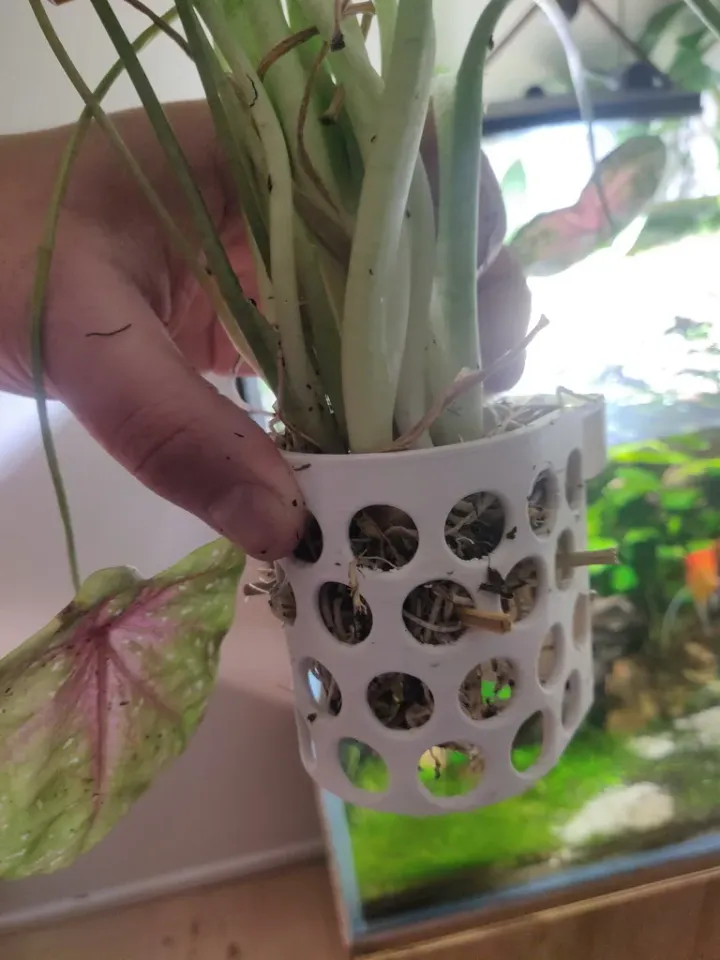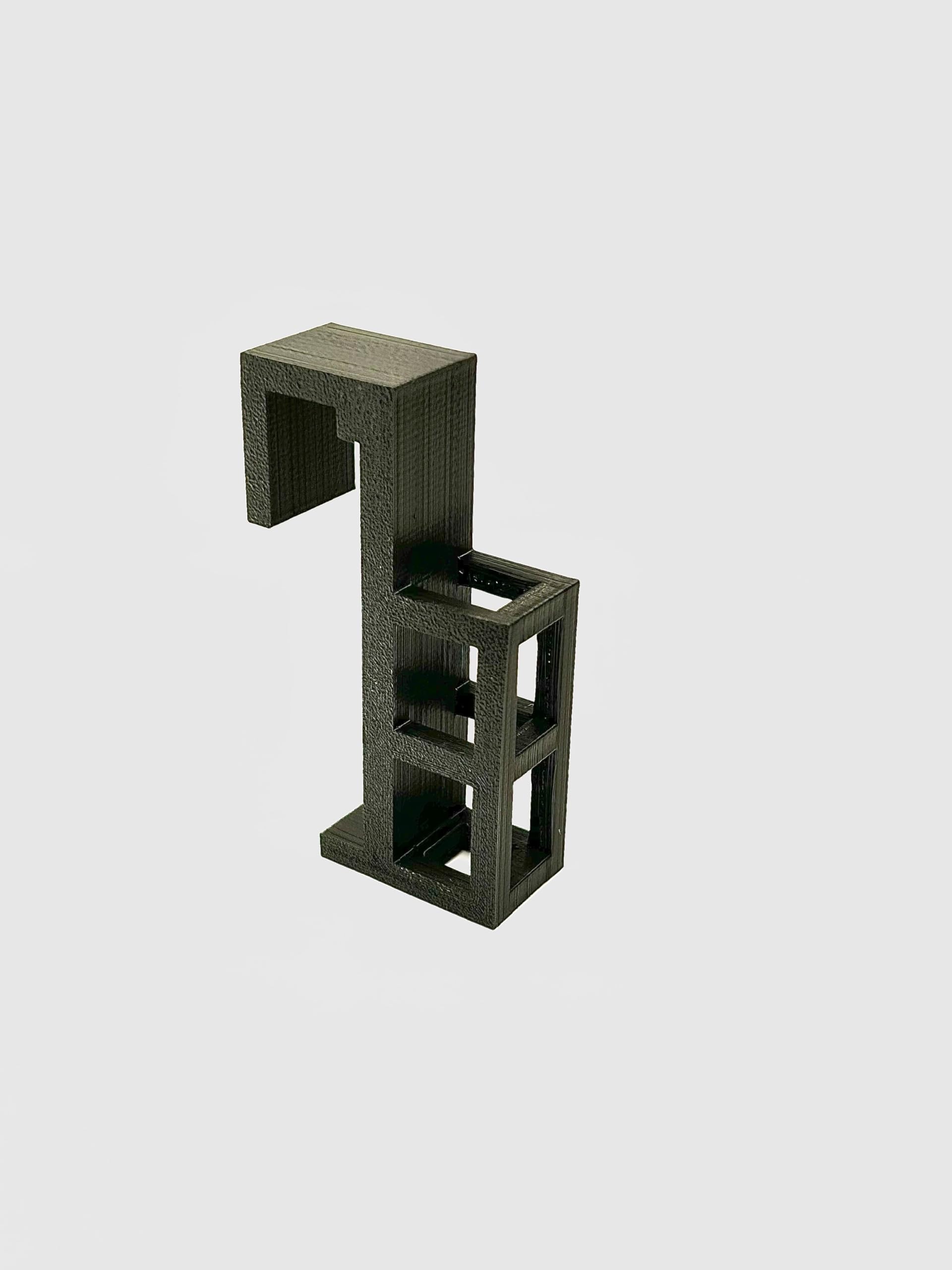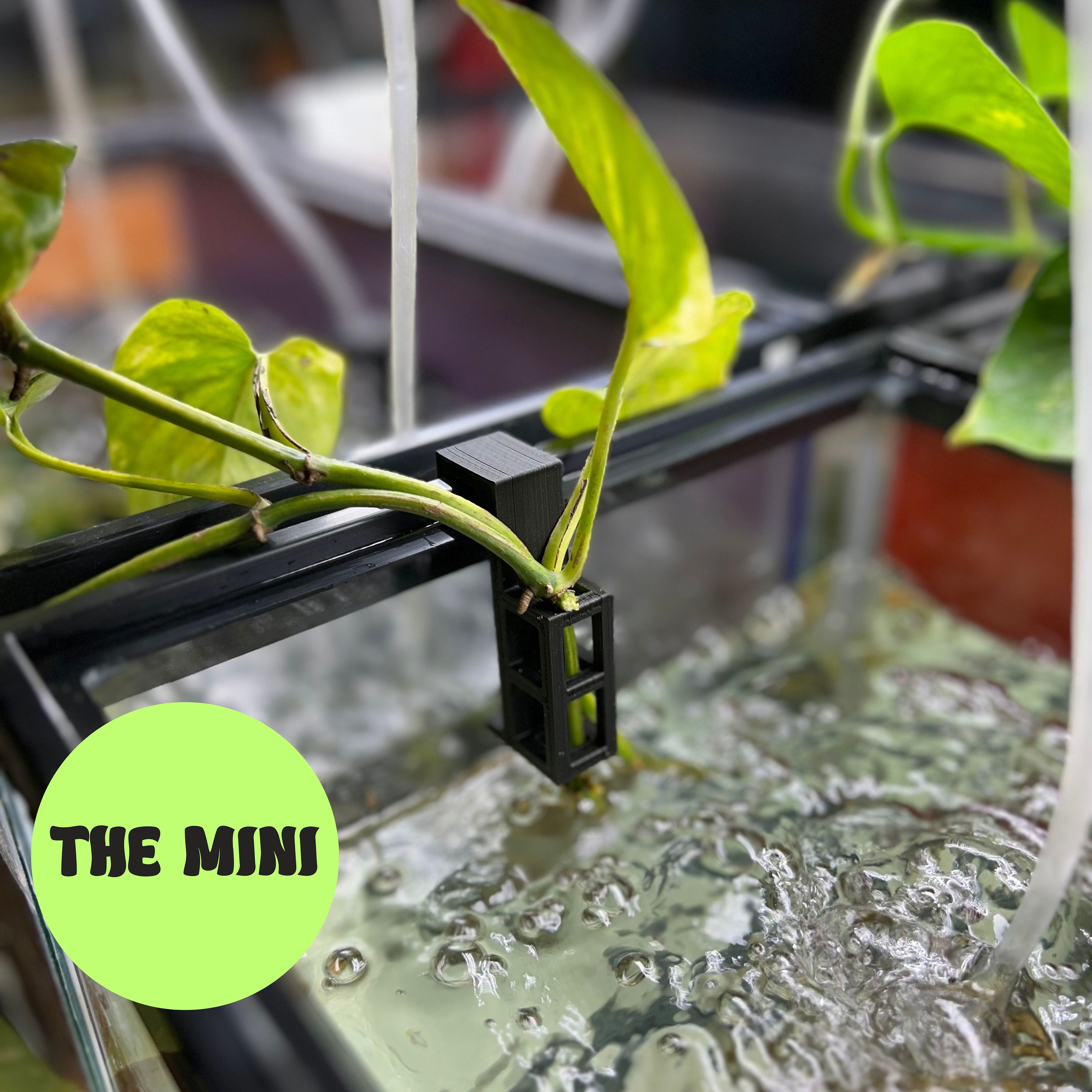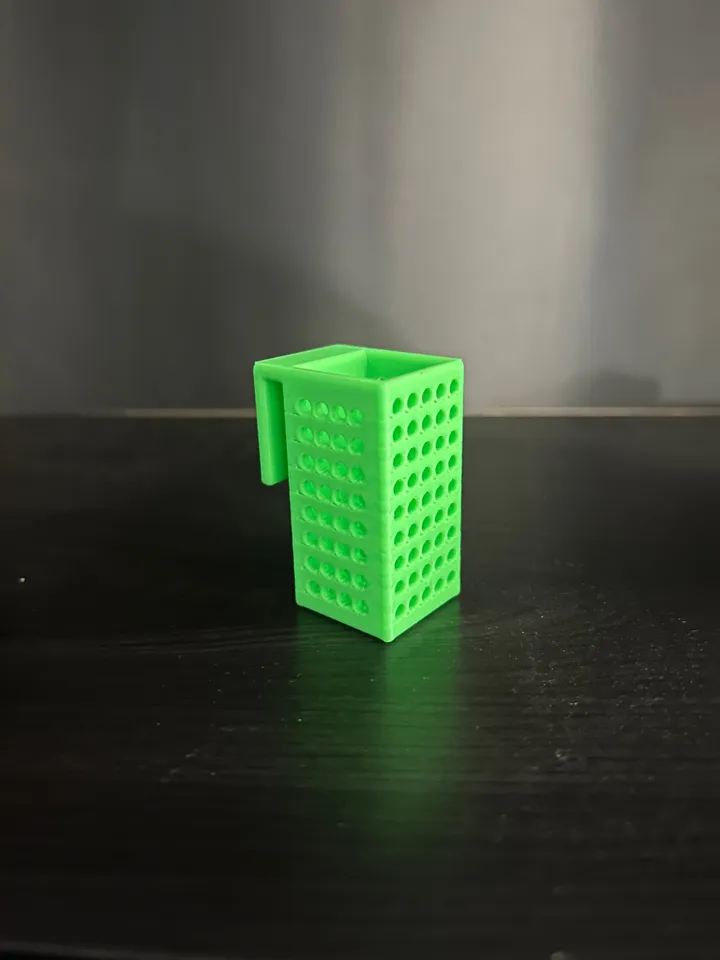Creating an aquarium plant holder can be tricky. 3D printing offers a unique solution.
This technology allows for custom designs that cater to specific aquarium needs. Aquarium enthusiasts often struggle with plant arrangement. Traditional holders may not fit all tank sizes or styles. That’s where 3D printing comes in handy. It provides flexibility and creativity in creating plant holders.
You can design holders that fit perfectly in your tank. This innovation enhances the aesthetic and functionality of aquariums. It allows hobbyists to craft personalized layouts for their aquatic plants. With 3D printing, you can explore different styles and features. Whether you want a sleek design or something intricate, 3D printing can make it happen. It opens up possibilities for aquarium customization, making your underwater world unique and engaging.
Introduction To 3d Printing
Welcome to the fascinating world of 3D printing. This technology is transforming how we create and design objects. It offers endless possibilities. You can now make complex designs with ease. This includes creative items like aquarium plant holders.
Basics Of 3d Printing
3D printing creates objects layer by layer. It uses digital designs to print physical items. You start by designing a model on a computer. The 3D printer reads this design. Then, it builds the object using materials like plastic.
This method is quick and cost-effective. It lets hobbyists and professionals alike create unique designs. You can print tools, decorations, and more. The process is simple and accessible to beginners.
Relevance To Aquarium Design
3D printing is vital for aquarium design. It allows custom plant holders that fit any tank. You can design holders to match your tank’s style. They can be any shape or size.
Printed plant holders are durable. They withstand water and humidity. You can experiment with different designs. Create holders that blend with your aquarium’s theme. This enhances the visual appeal of your aquatic environment.
3D printing gives you flexibility. You can adjust designs as needed. This means you can create perfect plant holders for your tank. The possibilities are endless with this innovative technology.
Benefits Of 3d Printed Plant Holders
3D printed aquarium plant holders offer a customizable and eco-friendly solution for aquatic plant enthusiasts. These holders provide precise fit and stability, enhancing plant growth and overall aquarium aesthetics. Lightweight and durable, they are perfect for maintaining healthy aquatic environments.
The Benefits of 3D Printed Plant Holders extend beyond just holding your aquarium plants. They offer a unique blend of functionality and design that can enhance your underwater landscape. Whether you’re a seasoned aquarist or a beginner, these benefits can make maintaining and beautifying your aquarium an exciting and rewarding experience.Customization And Creativity
3D printed plant holders allow for unparalleled customization. You can design holders that perfectly fit your specific plant species and tank layout. Imagine having a holder that not only securely anchors your plants but also adds an artistic touch to your aquarium setup. Unleash your creativity by designing intricate shapes and patterns. Unlike traditional plant holders, 3D printing lets you experiment with different styles. Have you ever thought about creating a coral reef effect or a miniature underwater castle? The sky’s the limit with 3D printing. You can even match the plant holders to the theme of your room or the mood you want to set in your aquarium. It’s a fun way to express your personality and make your aquarium truly your own.Cost-effectiveness
3D printing can be a cost-effective solution for creating plant holders. Traditional plant holders can be expensive, especially if you want something unique. With 3D printing, you can create as many holders as you need without breaking the bank. Think about the savings when you no longer need to replace broken or unsuitable holders. You can simply print a new one at home. Plus, you can experiment with different designs without the risk of wasting money. Consider the materials you use for printing. Many 3D printing materials are affordable and readily available. This adds to the overall cost savings and makes 3D printing an attractive option for aquarists on a budget. Are you curious about how much you could save by switching to 3D printed plant holders? Explore the possibilities and see the benefits for yourself.Designing Plant Holders
Creating a stunning aquarium often involves more than just colorful fish and crystal-clear water. The plants within your aquatic paradise play a vital role in creating a vibrant ecosystem. Designing plant holders for your aquarium can elevate the aesthetic and functionality of your setup. Let’s dive into the world of designing plant holders using 3D printing, focusing on material selection and design software.
Choosing The Right Material
Material choice can make or break your 3D printed plant holders. Consider how the material interacts with water. ABS and PLA are popular choices due to their durability and ease of use. However, ensure they’re safe for aquatic life. Reflect on your own experiences in crafting. What materials have worked best for your past projects? Sometimes, trying a new material can lead to unexpected successes.
Another factor is the visual appeal of the material. Transparent or vibrant colors might complement your aquarium’s theme. Imagine the holder subtly blending with the plants, enhancing the natural look. Would a flexible material work better for your design? Experimentation is key to finding the right balance between aesthetics and functionality.
Design Software Options
The software you choose can shape the complexity and creativity of your design. TinkerCAD is a great starting point for beginners with its user-friendly interface. It allows you to play with basic shapes and create custom designs easily. Have you ever tried using more advanced software like Blender or Fusion 360? They offer extensive tools for intricate designs, giving you room for innovation.
Think about the learning curve of each software. If you’re new to 3D design, starting simple can keep frustration at bay. As you gain confidence, transitioning to software with advanced features can expand your design possibilities. Are you ready to challenge your skills and push the boundaries of your creativity? Each software offers unique features that can bring your vision to life.
Designing 3D printed aquarium plant holders is an exciting endeavor that combines creativity with practicality. Whether you’re a hobbyist or a seasoned designer, making informed choices about materials and software can lead to remarkable results.
Printing Your Plant Holder
Creating your own aquarium plant holder using a 3D printer is a thrilling project. You get to design something functional and unique for your aquatic environment. Plus, there’s a rewarding feeling that comes from seeing your vision materialize right before your eyes. But how do you ensure success in your printing journey?
Preparing Your 3d Printer
Before you hit the print button, make sure your 3D printer is set up correctly. Check the printer’s calibration, ensuring the bed is level. A misaligned bed can lead to uneven prints. Inspect the nozzle to ensure it’s clean and free from debris. A clogged nozzle can ruin your design.
Have you ever printed something only to realize halfway through that the filament was running out? It’s frustrating. Always check your filament supply before starting a print. Ensuring you have enough material is crucial to avoid interruptions.
Tips For Successful Printing
Use a slow and steady printing speed for detailed designs. It might be tempting to speed things up, but rushing can result in poor quality. Patience pays off with clean lines and sturdy structures.
Temperature settings are vital. Ensure the filament you’re using matches the temperature settings on your printer. Too hot or too cold can lead to problems like warping. Have you ever thought about why your prints aren’t sticking to the bed? Sometimes, a simple tweak in temperature can solve this issue.
Keep your workspace organized. An uncluttered area reduces errors and allows for easy access to tools. What if you needed to make quick adjustments? With everything in reach, you’ll stay on track with your project.
Do you have a friend who’s into 3D printing? Share your experiences and learn from theirs. Sometimes, a fresh perspective can highlight solutions you hadn’t considered.
Ultimately, your 3D printed aquarium plant holder is more than just a tool; it’s a personal masterpiece that enhances your underwater world. Each step in the printing process brings you closer to a unique creation, crafted by your own hands.
Integrating Holders Into Aquariums
Creating a 3D printed plant holder for aquariums offers a custom touch to underwater spaces. These holders help keep plants organized and secure. Enhance your aquarium’s appearance with personalized designs that fit your style.
Integrating 3D-printed aquarium plant holders into your aquarium setup can enhance its beauty. These holders provide a secure base for aquatic plants, helping them thrive. Whether creating a lush underwater forest or displaying a single plant, placement and stability are crucial. Here’s how to integrate these holders effectively into your aquarium.Placement And Positioning
Place the plant holders where they complement your tank’s design. Consider the light source when positioning holders. Plants need light to grow well. Avoid areas with strong currents. This prevents plants from getting uprooted. Choose spots that enhance the visual appeal of your aquarium. Grouping holders can create beautiful plant clusters. This adds depth to your aquatic landscape.Ensuring Stability
Ensure the holders are stable and secure. Use aquarium-safe adhesives if needed. This prevents holders from tipping over. Sand or gravel can provide additional support. Make sure the base of the holder is covered. This helps keep it in place. Test the stability before adding plants. A stable holder ensures healthy plant growth.
Credit: www.printables.com
Impact On Aquarium Ecosystem
The introduction of a 3D printed aquarium plant holder can transform aquatic environments. It supports plant growth, maintains water quality, and enhances the ecosystem. These holders offer a sustainable way to organize plants in any aquarium. They are customizable and can fit specific tank needs. Let’s explore their impact on the aquarium ecosystem.
Enhancing Plant Growth
3D printed plant holders provide stability for aquatic plants. They ensure plants remain securely in place. This stability allows roots to develop fully. Well-anchored plants grow healthier and more robust. Such growth is vital for a thriving aquarium ecosystem. The holders also allow optimal light access. Plants need light to photosynthesize effectively. Better light exposure promotes lush and vibrant growth.
Maintaining Water Quality
Healthy plants contribute to cleaner water. They absorb excess nutrients like nitrates. This reduces algae growth and keeps the tank clear. Plants supported by holders can filter the water efficiently. Their roots help in oxygenating the water. Oxygenated water supports fish and other aquatic life. 3D printed holders promote a balanced environment. This balance is crucial for the overall health of the aquarium.
Maintenance And Care
Ensure the aquarium plant holder stays clean by gently wiping it with a soft cloth. Regularly check for any algae buildup and remove promptly. Use mild soap if needed, avoiding harsh chemicals to keep the holder and plants safe.
Maintaining and caring for your aquarium plant holder 3D print is crucial for keeping your aquatic environment thriving. Neglecting this can lead to algae buildup or even damage to your holder, affecting the health of your plants. Regular maintenance ensures your aquarium stays beautiful and your plants flourish. Let’s dive into some practical tips for caring for your plant holder.Cleaning Techniques
Cleaning your aquarium plant holder is simpler than you might think. Start by removing the holder from the tank. Gently scrub it with a soft brush to remove algae and grime. Use a mild detergent if necessary, but ensure it’s thoroughly rinsed before putting it back. Think about the time you spent meticulously arranging your plants. You wouldn’t want that hard work to go to waste, right? Regular cleaning prevents unwanted buildup that can smother your plants. Consider how often you notice algae starting to form. Weekly checks can help you catch issues early. This routine can save you from bigger problems down the line.Repair And Replacement
Accidents happen, and your plant holder might get damaged. Assess the damage and see if it’s something you can repair at home. Small cracks can often be fixed with aquarium-safe glue. Remember the satisfaction of seeing your plants thrive? Keeping your holder in good repair ensures their roots stay stable. Sometimes, replacement is the best option if damage is extensive. Think about how replacing a worn-out holder can rejuvenate your tank. It might be the key to a fresh start for your aquatic garden. Is your current holder holding you back? Consider the benefits of replacing it with a new 3D print design. Taking care of your aquarium plant holder not only enhances your tank’s aesthetic but also supports your plants’ health. Regular cleaning and timely repairs can make a significant difference. Wouldn’t it be rewarding to see your plants grow lush and vibrant?
Credit: www.amazon.com
Future Trends In 3d Printing
Aquarium plant holder 3D prints are gaining popularity in 3D printing trends. These holders offer customizable designs for aquatic plants. Hobbyists enjoy creating eco-friendly, personalized plant holders that enhance aquarium aesthetics.
The future of 3D printing is paving the way for exciting developments, especially in the realm of aquarium plant holders. As technology advances, we’re seeing a shift towards more intricate designs and eco-friendly materials. This is not only transforming the way we approach aquarium decor but also reflecting broader trends in sustainability and personalization.Innovative Designs
3D printing is unleashing a wave of creativity in aquarium plant holder designs. Imagine having a holder that resembles a miniature coral reef or one that mimics the natural habitat of your fish. These designs are not just for aesthetics; they can enhance the well-being of your aquatic life by providing more natural environments. The ability to customize designs means you can tailor holders to fit specific tanks or preferences. Have you ever wished for a plant holder that fits perfectly in that awkward corner of your aquarium? Now, you can design it to your exact specifications. This personalization trend is making waves in the aquarium community, allowing enthusiasts to express their unique styles.Sustainable Materials
As 3D printing technology evolves, there’s a growing emphasis on using sustainable materials. Many enthusiasts are now opting for biodegradable filaments that reduce environmental impact. This shift is crucial for maintaining ecological balance and ensuring that our hobbies don’t harm the planet. Choosing sustainable materials doesn’t mean compromising on quality or durability. In fact, many of these materials are just as robust as their traditional counterparts. Have you considered the impact of your aquarium accessories on the environment? Opting for plant holders made from eco-friendly materials is a step towards a more sustainable hobby. With the rise of innovative designs and sustainable materials in 3D printing, the possibilities for your aquarium are expanding. What new designs will you create? How will you contribute to a more sustainable future? The power is in your hands to shape the future of aquarium decor.
Credit: www.etsy.com
Frequently Asked Questions
How Do 3d Printed Plant Holders Work?
3D printed plant holders provide a customizable and durable solution for aquarium plant placement. They are designed to securely hold plants and can be tailored to fit specific aquarium sizes. The holders are typically made from safe, non-toxic materials suitable for underwater use, ensuring plant stability and growth.
What Materials Are Used For 3d Printing Plant Holders?
Common materials for 3D printing plant holders include PLA and PETG. These materials are eco-friendly and safe for aquatic environments. PLA is biodegradable and suitable for most aquariums, while PETG offers higher durability and resistance to water. Both materials ensure long-lasting plant support.
Are 3d Printed Plant Holders Safe For Fish?
Yes, 3D printed plant holders are safe for fish when made from non-toxic materials like PLA or PETG. They do not leach harmful chemicals into the water. These holders provide stable plant placement without affecting water quality or fish health.
It’s crucial to ensure proper design and material choice.
Can I Customize My Aquarium Plant Holder Design?
Absolutely! 3D printing allows complete customization of plant holder designs. You can adjust size, shape, and features to fit your specific aquarium needs. This customization ensures optimal plant placement and aesthetic integration. Many online platforms offer design templates, or you can create your own unique design.
Conclusion
Creating a 3D printed aquarium plant holder is simple and fun. It adds charm to your underwater world. You can customize designs to suit your tank. This makes it easy to match your style. Plus, it’s a cost-effective solution. No need to buy expensive holders.
Printing your own saves money and time. Experiment with different shapes and sizes. Enjoy watching your plants thrive in these holders. A rewarding hobby for aquarium lovers. Start your 3D printing journey today. Enjoy a vibrant, unique aquarium. Happy printing!





